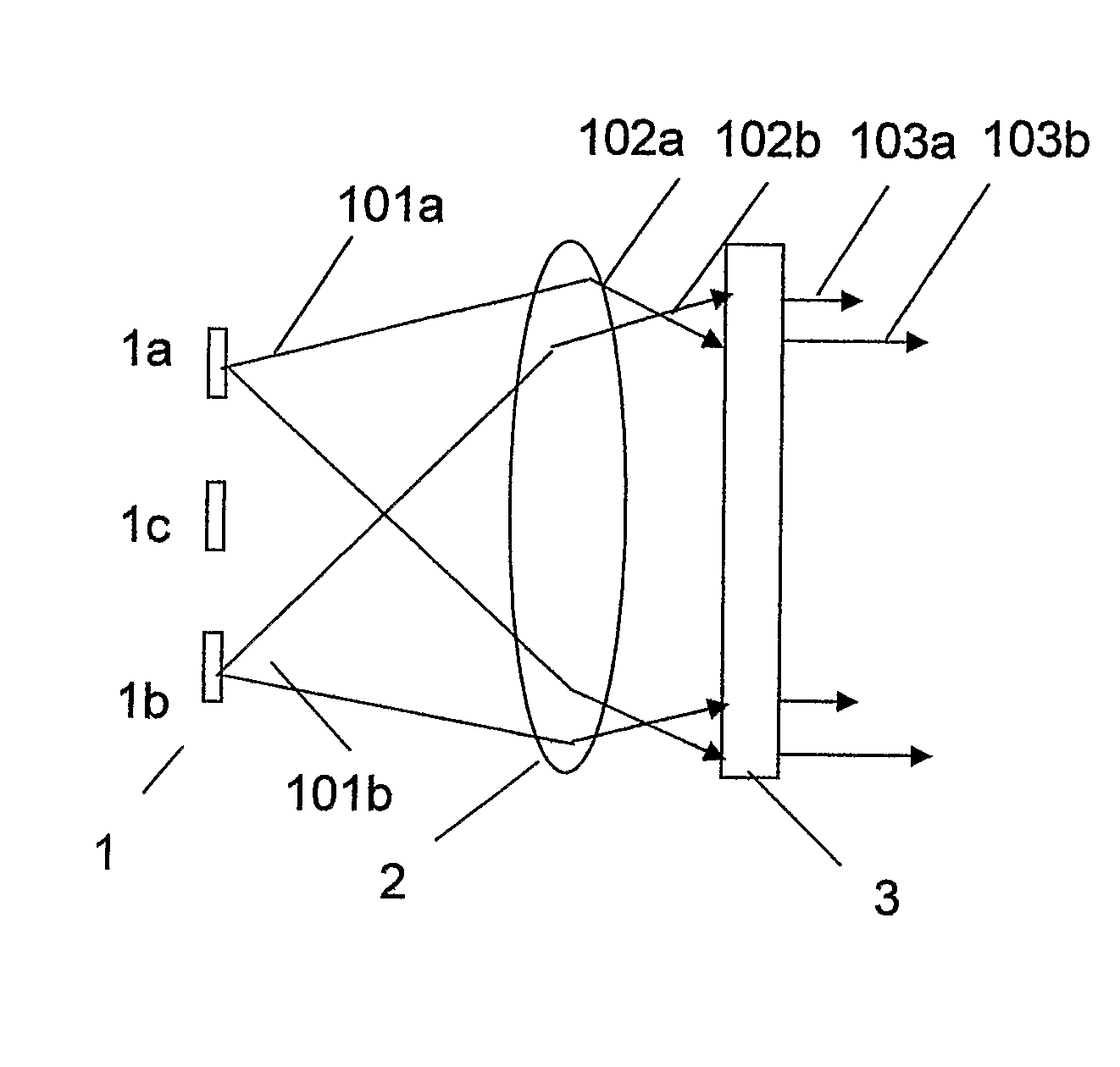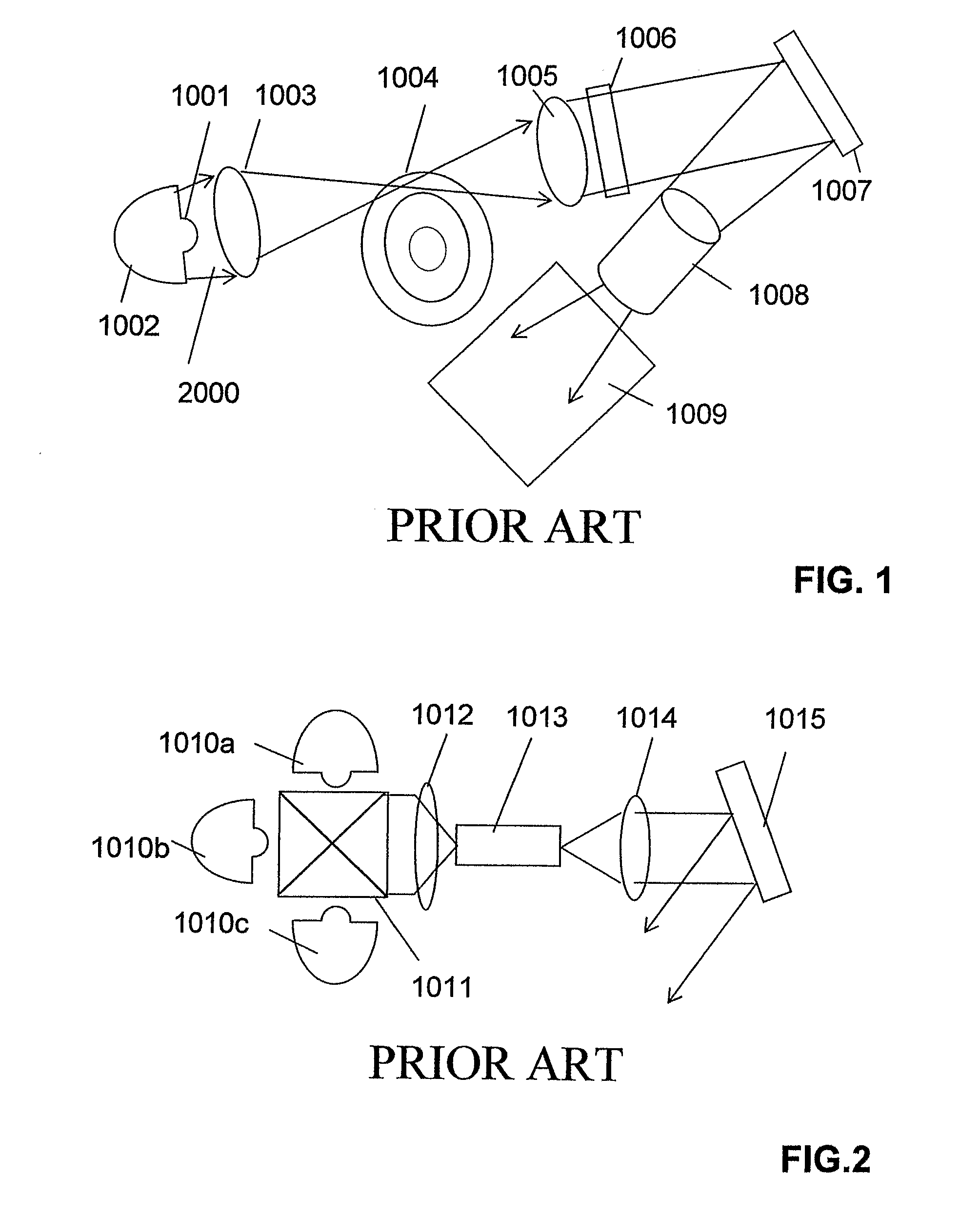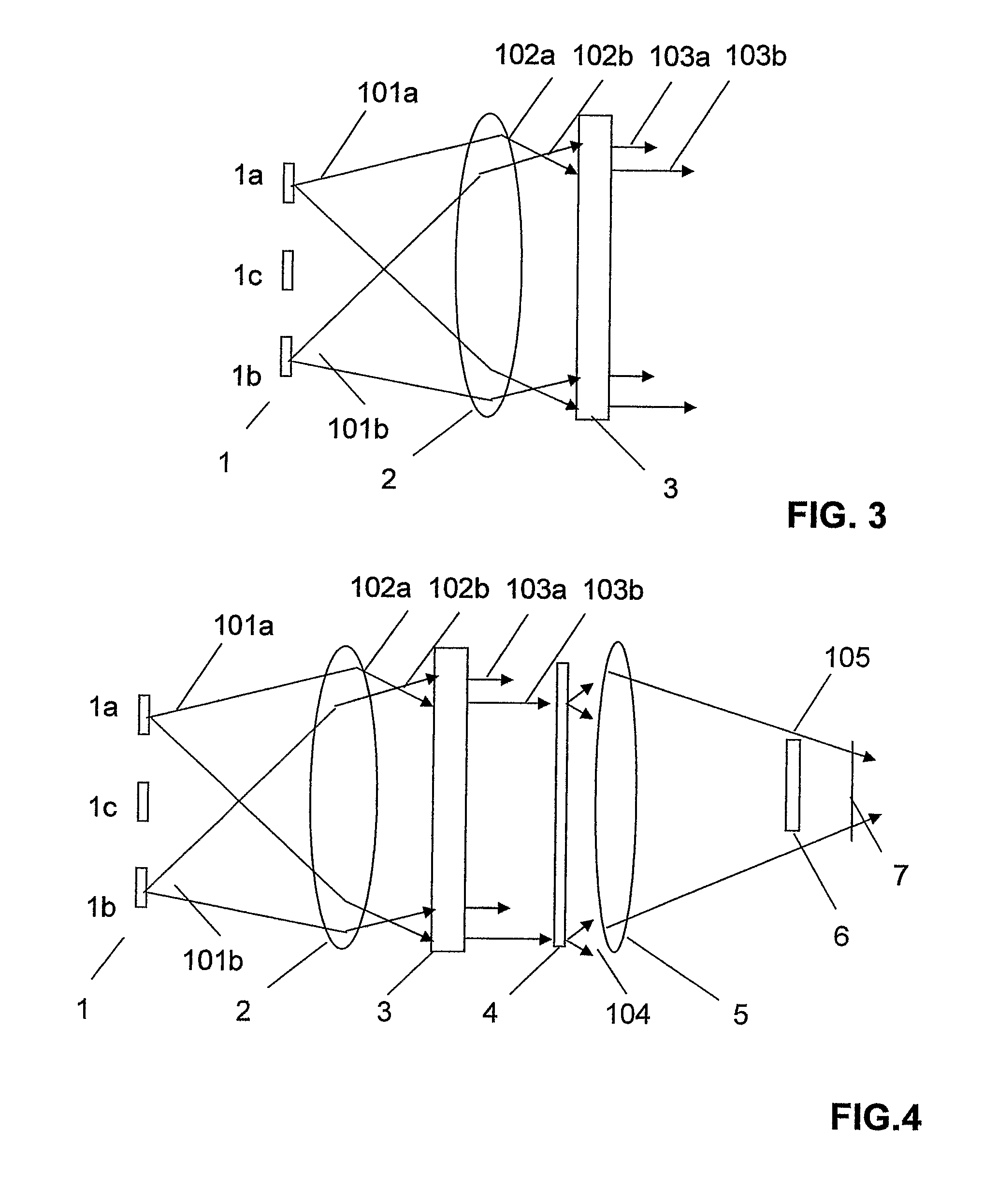Apparatus for condensing light from multiple sources using Bragg gratings
a technology of condensing light and bragg grating, which is applied in the direction of lighting and heating apparatus, light source combinations, instruments, etc., can solve the problems of incoherent sources such as uhp lamps, short lamp lifetime, and high heat dissipation and power consumption
- Summary
- Abstract
- Description
- Claims
- Application Information
AI Technical Summary
Benefits of technology
Problems solved by technology
Method used
Image
Examples
Embodiment Construction
[0094]FIG. 3 shows a schematic side elevation view of a first embodiment of the invention. The illuminator comprises the LED module 1, condenser lens 2, and an ESBG device configured as a stack of separately switchable ESBG layers. Said optical elements are aligned along an optical axis normal to the surface of each element Each ESBG layer is recorded in HPDLC sandwiched between transparent substrates to which transparent conductive coatings have been applied. Each ESBG has a diffracting state and a non-diffracting state. Each ESBG diffracts light in a direction substantially parallel to the optical axis when in said active state. However, each ESBG is substantially transparent to said light when in said inactive state. Each ESBG is operative to diffract at least one wavelength of red, green or blue light. As shown in FIG. 3 the LED module comprises emitters 1a, 1b, 1c which would normally comprised red green and blue LEDs. Although only one LED of each colour is shown in FIG. 3 mor...
PUM
 Login to View More
Login to View More Abstract
Description
Claims
Application Information
 Login to View More
Login to View More - R&D
- Intellectual Property
- Life Sciences
- Materials
- Tech Scout
- Unparalleled Data Quality
- Higher Quality Content
- 60% Fewer Hallucinations
Browse by: Latest US Patents, China's latest patents, Technical Efficacy Thesaurus, Application Domain, Technology Topic, Popular Technical Reports.
© 2025 PatSnap. All rights reserved.Legal|Privacy policy|Modern Slavery Act Transparency Statement|Sitemap|About US| Contact US: help@patsnap.com



